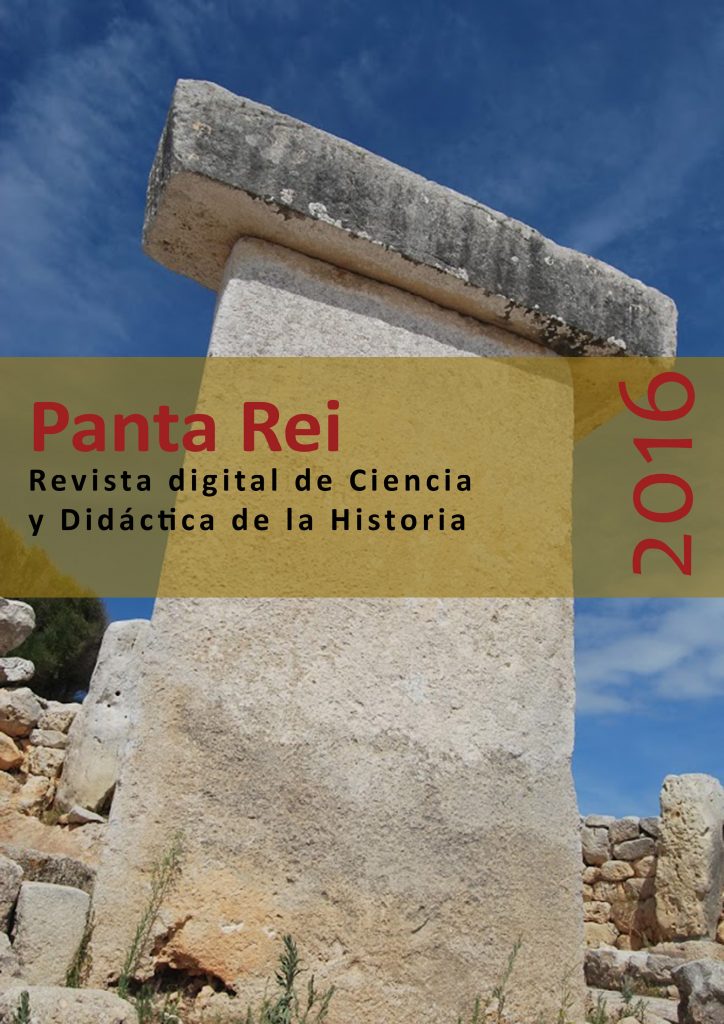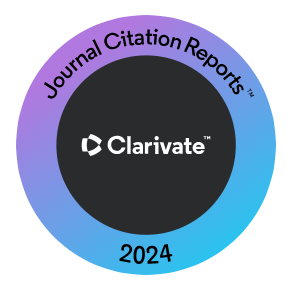The origins of technology under debate: a review of the first lithic industries
Abstract
For many years, the scientific community has considered the production of lithic artifacts as a unique characteristic of the genus Homo. However, recent discoveries made in African sites have provided results that seem to put this issue in doubt, delaying the appearance time of the first stone industries to beyond the 2.6 Myr. posed by the deposits of Kada Gona. This paper aims to make a review on these sites, trying to consider the possible authorship of that early technologies, which are framed in a high complexity paleoanthropological context, and perhaps are attributable to members of other genres.
Downloads
-
Abstract532
-
PDF (Español (España))489
References
Asfaw, B., White, T., Lovejoy, O., Latimer, B., Simpson, S. y Suwa, G. (1999). Australopithecus garhi: a new species of early hominid from Ethiopia. Science, 284(5414), 629-635.
Benson-Amram, S., Dantzer, B., Stricker, G., Swanson, E. M. y Holekamp, K. E. (2016). Brain size predicts problem-solving ability in mammalian carnivores. Proceedings of the National Academy of Sciences, 11(9), 2532-2537.
Carlson, K. J., Stout, D., Jashashvili, T., De Ruiter, D. J., Tafforeau, P., Carlson, K. y Berger, L. R. (2011). The endocast of MH1, Australopithecus sediba. Science, 333(6048), 1402-1407.
Carvalho, S., Cunha, E., Sousa, C. y Matsuzawa, T. (2008). Chaînes opératoires and resource-exploitation strategies in chimpanzee (Pan troglodytes) nut cracking. Journal of Human Evolution, 55(1), 148-163.
Carvalho, S., Biro, D., McGrew, W. C. y Matsuzawa, T. (2009). Tool-composite reuse in wild chimpanzees (Pan troglodytes): archaeologically invisible steps in the technological evolution of early hominins?. Animal Cognition, 12(1), 103-114.
Castanedo, A. G. y Terreros de los, J. Y. S. (2009). Las herramientas de piedra más antiguas en África. Una visión general y algunas reflexiones. Sautuola: Revista del Instituto de Prehistoria y Arqueología. Sautuola, (15), 11-33.
Cela Conde, C.J. y Ayala, F.J. (2001). Senderos de la evolución humana. Madrid: Alianza Editorial.
Clark, G. (1977). World prehistory: in new perspective. Cambridge University Press.
Dart, R.A. (1957). The osteodontokeratic culture of Australopithecus prometheus (Vol. 10). Transvaal Museum.
Dart, R.A. y Wolberg, D.L. (1971) On the Osteodontokeratic Culture of the Australopithecinae. Current Anthropology 12(2), 233–236.
Delagnes, A. y Roche, H. (2005). Late Pliocene hominid knapping skills: the case of Lokalalei 2C, West Turkana, Kenya. Journal of Human Evolution, 48(5), 435-472.
Díez Martin, F. (2003). La aplicación de los “modos tecnológicos” en el análisis de las industrias paleolíticas. Reflexiones desde la perspectiva europea. SPAL, 12, 35-51.
Domínguez-Rodrigo, M., Pickering, T. R. y Bunn, H. T. (2010). Configurational approach to identifying the earliest hominin butchers. Proceedings of the National Academy of Sciences, 107(49), 20929-20934.
Domínguez-Rodrigo, M., Pickering, T. R. y Bunn, H. T. (2012). Experimental study of cut marks made with rocks unmodified by human flaking and its bearing on claims of 4-million-year-old butchery evidence from Dikika, Ethiopia. Journal of Archaeological Science. 39(2), 205-214.
Falk, D., Redmond, J. C., Guyer, J., Conroy, C., Recheis, W., Weber, G. W. y Seidler, H. (2000). Early hominid brain evolution: a new look at old endocasts. Journal of Human Evolution, 38(5), 695-717.
Haile-Selassie, Y., Gibert, L., Melillo, S. M., Ryan, T. M., Alene, M., Deino, A., ... y Saylor, B. Z. (2015). New species from Ethiopia further expands Middle Pliocene hominin diversity. Nature, 521(7553), 483-488.
Haslam, M., Hernandez-Aguilar, A., Ling, V., Carvalho, S., de La Torre, I., DeStefano, A., ... y Matsuzawa, T. (2009). Primate archaeology. Nature, 460(7253), 339-344.
Harmand, S., Lewis, J. E., Feibel, C. S., Lepre, C. J., Prat, S., Lenoble, A., ... y Taylor, N. (2015). 3.3-million-year-old stone tools from Lomekwi 3, West Turkana, Kenya. Nature, 521(7552), 310-315.
Heinzelin de, J., Clark, J. D., White, T., Hart, W., Renne, P., WoldeGabriel, G., ... y Vrba, E. (1999). Environment and behavior of 2.5-million-year-old Bouri hominids. Science, 284(5414), 625- 629.
Inoue-Nakamura, N. y Matsuzawa, T. (1997). Development of stone tool use by wild chimpanzees (Pan troglodytes). Journal of comparative psychology, 111(2), 159.
Leakey, L. S. B., Tobias, P. V. y Napier, J. R. (1964) A new species of the genus Homo from the Olduvai Gorge. Nature. 202(4927), 7-9.
Leakey, M. G., Spoor, F., Brown, F. H., Gathogo, P. N., Kiarie, C., Leakey, L. N. y McDougall, I. (2001). New hominin genus from eastern Africa shows diverse middle Pliocene lineages. Nature, 410(6827), 433-440.
McPherron, S. P., Alemseged, Z., Marean, C. W., Wynn, J. G., Reed, D., Geraads, D., ... y Béarat, H. A. (2010). Evidence for stone-tool-assisted consumption of animal tissues before 3.39 million years ago at Dikika, Ethiopia. Nature, 466(7308), 857-860.
Mercader, J., Panger, M. y Boesch, C. (2002). Excavation of a chimpanzee stone tool site in the African rainforest. Science. 296(5572), 1452-1455.
McGrew, W.C. (1992). Chimpanzee material culture: implications for human evolution. Cambridge: Cambridge University Press.
Panger, M. A., Brooks, A. S., Richmond, B. G. y Wood, B. (2002). Older than the Oldowan? Rethinking the emergence of hominin tool use. Evolutionary Anthropology: Issues, News, and Reviews, 11(6), 235-245.
Plummer, T. (2004). Flaked stones and old bones: biological and cultural evolution at the dawn of technology. American Journal of Physical Anthropology. 125(S39), 118-164.
Plummer, T., Bishop, L. C., Ditchfield, P. y Hicks, J. (1999). Research on Late Pliocene Oldowan sites at Kanjera South, Kenya. Journal of Human Evolution, 36(2), 151-170.
Semaw, S. (2000). The world’s oldest stone artefacts from Gona, Ethiopia: their implications for understanding stone technology and patterns of human evolution between 2.6–1.5 million years ago. Journal of Archaeological Science, 27(12), 1197-1214.
Semaw, S., Renne, P., Harris, J. W., Feibel, C. S., Bernor, R. L., Fesseha, N. y Mowbray, K. (1997). 2.5-million-year-old stone tools from Gona, Ethiopia. Nature, 385(23), 333-336
Semaw, S., Rogers, M. J., Quade, J., Renne, P. R., Butler, R. F., Dominguez-Rodrigo, M., ... y Simpson, S. W. (2003). 2.6-Million-year-old stone tools and associated bones from OGS-6 and OGS-7, Gona, Afar, Ethiopia. Journal of Human Evolution, 45(2), 169-177.
Schwartz, J. H. y Tattersall, I. (2015). Defining the genus Homo. Science, 349(6251), 931-932.
Stout, D., Quade, J., Semaw, S., Rogers, M. J. y Levin, N. E. (2005). Raw material selectivity of the earliest stone toolmakers at Gona, Afar, Ethiopia. Journal of Human Evolution, 48(4), 365-380.
Stout, D. y Chaminade, T. (2009). Making tools and making sense: complex, intentional behaviour in human evolution. Cambridge Archaeological Journal. 19(01), 85-96.
Stout, D. y Chaminade, T. (2012). Stone tools, language and the brain in human evolution. Philosophical Transactions of the Royal Society of London B: Biological Sciences. 367(1585), 75-87.
Thompson, J. C., McPherron, S. P., Bobe, R., Reed, D., Barr, W. A., Wynn, J. G., ... y Alemseged, Z. (2015). Taphonomy of fossils from the hominin-bearing deposits at Dikika, Ethiopia. Journal of human evolution, 86, 112-135.
Torre de la, I. (2011). The origins of stone tool technology in Africa: a historical perspective. Philosophical Transactions of the Royal Society of London B: Biological Sciences, 366(1567), 1028-1037.
Villmoare, B., Kimbel, W. H., Seyoum, C., Campisano, C. J., DiMaggio, E. N., Rowan, J., ... y Reed, K. E. (2015). Early Homo at 2.8 Ma from Ledi-Geraru, Afar, Ethiopia. Science, 347(6228), 1352-1355.
White, L. A. (1959). The concept of culture. American anthropologist. 61(2), 227-251.
Copyright (c) 2020 Arturo Cueva Temprana

This work is licensed under a Creative Commons Attribution-ShareAlike 4.0 International License.
All the contents published in this journal are subject to an Attribution-ShareAlike 4.0 International (CC BY-SA 4.0) Creative Commons License. You are free to: Share — copy and redistribute the material in any medium or format, Adapt — remix, transform, and build upon the material, for any purpose, even commercially. Under the following terms:
Attribution — You must give appropriate credit, provide a link to the license, and indicate if changes were made. You may do so in any reasonable manner, but not in any way that suggests the licensor endorses you or your use.
ShareAlike — If you remix, transform, or build upon the material, you must distribute your contributions under the same license as the original.
Full text of the license is available in: Creative Commons License 












